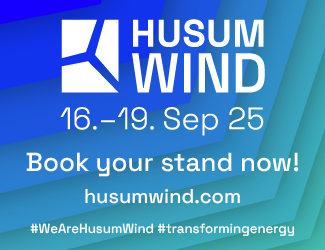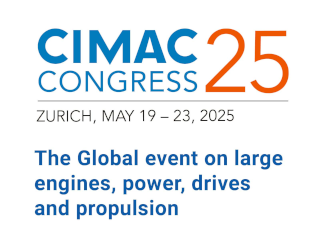Demand for big gearless vessels rebounds and pushes rate levels up again. In contrast, dry market expectations bursting like a bubble.
Overall the container ship charter market continued to lose ground during November, but trends within the sub-segments displayed significant[ds_preview] variation. While the size classes from 5,000TEU down to feeders below 1,000TEU capacity got under greater pressure, the traditional post-panamax segments above 5,300TEU benefited from increased demand, falling tonnage availability and a slight recovery in charter market rates from the lows of early November.
Looking at the overall utilization of the world container ship fleet (liner-owned and tramp owned), things started to improve again in the aftermath of the Golden Week holiday in China as export shipments were resumed and regular liner sailings reinstated. According to Alphaliner, the global idle fleet dropped to 532,000TEU as per 12 November (2.4% of total capacity) after already nudging 700,000TEU. Large gearless vessels with 7,500TEU and more saw the sharpest relative fall. Apart from the recommissioning of liner-controlled units, tramp charter vessels were also benefiting as several more spot/prompt ships got fixed or extended by charterers. The reactivation of capacity in the larger sectors was consequently mirrored in a steep fall in spot availability for big ships. Spot supply of 7,500TEU and larger has completely dried out. The latest vessels leaving the market were able to achieve notably higher rates, with one 8,800TEU unit reportedly obtaining 15,500$/day in a short period with Maersk Line. This was up from last done of around 13,000$, according to brokers. Equally, availability of smaller post-panamax vessels of 5,500 to 7,500TEU dropped from around 20 to just 2 within no more than 4 weeks following a rash of fixtures. Rates here picked up, too, as highlighted by the fixture of the 6,661EU »X-Press Annapurna« together with some more ships at a reported 11,500$/day for 3-6 months to Hapag-Lloyd. This was around 2,500$ higher than the previous reported fixture.
Some have pointed to a slowdown in newbuilding deliveries during the final months of the year as one of the stabilizing factors for the supply side. As far as the container trades are concerned, all the data so far suggests reasonable growth in the low-to-mid single-digit range this year.
Despite small revisions to world GDP growth by agencies such as the International Monetary Fund, shipping analysts have hardly revised their forecasts for container trade growth down. Also, the latest sharp falls in crude and bunker prices injected some more optimism. The hope is that the cost reductions will be positively reflected in earnings over the coming weeks and months, lifting the appetite among operators for service expansion and additional charter tonnage.
There has been no relieve so far for the main charter segments from panamax down to feeders, though. As common around this time of the year, spot availability remains high or even goes up further. The 1,500-1,800TEU segment is facing the greatest shortage of employment opportunities. It is the panamax and the gearless 2,700/2,800TEU segments, though, that are recording the fastest rise in spot availability. The result was an immense rise in pressure on rates. In the panamax space, 5,000TEU maxi-panamaxes suffered heavy falls down to mid 7,000’s $/day while baby-panamaxes of 4,200/4,300TEU were still able to maintain 10,000$ in Asia and 10,500$ in Europe. The challenge for owners during the next weeks will be to halt a further deterioration into four-digit levels. Owners of gearless 2,800TEU units already had to accept a drop below 10,000$ in several cases. Only the popular German-built Aker 2700 types were still seen obtaining 10,000$ in the Far East.
Geared and gearless standard 1,700TEU vessels saw fixing levels slip below 8,000$, first in the Atlantic and then in Asia, too. Only the newest, most advanced designs such as the Topaz 1700 continue to be able to avoid idle periods as operators cannot afford to forego the efficiencies these vessels offer.
Dry market hopes faded
Hopes of a year-end rally in the dry cargo market have finally faded as spot time charter earnings for capesize bulkers crashed down below 8,000$/day, only to see a modest rebound to 10,853$/day by the time HANSA went to press.
Spot demand was anaemic during November at a time when most market participants were awaiting a final import push for iron ore and coals from China. Its national reform and development commission put an end to all hopes when it announced an import ban for additional coal cargoes and the suspension of customs clearance for all discharged coal until January. With the upcoming »winter curbs« in mind, Chinese buyers are believed to have brought a lot of shipments forward to the third quarter already.
Lack of coal volumes also left plenty of panamax bulkers open in the Indian Ocean and the Pacific, with the East Coast of South America offering limited support to the market. Spot earnings drifted notably lower, though not as sharp as for »capes«. For smaller geared bulkers, rate levels continued to weaken at a more moderate pace.
The shortsea dry bulk trades in Europe, however, finally enjoyed a long-anticipated firmer trend, with spot tonnage clearing out and rate levels picking up both in North Europe and the Mediterranean. All the broker assessments in our »compass« bar showed notable improvements.
Michael Hollmann















